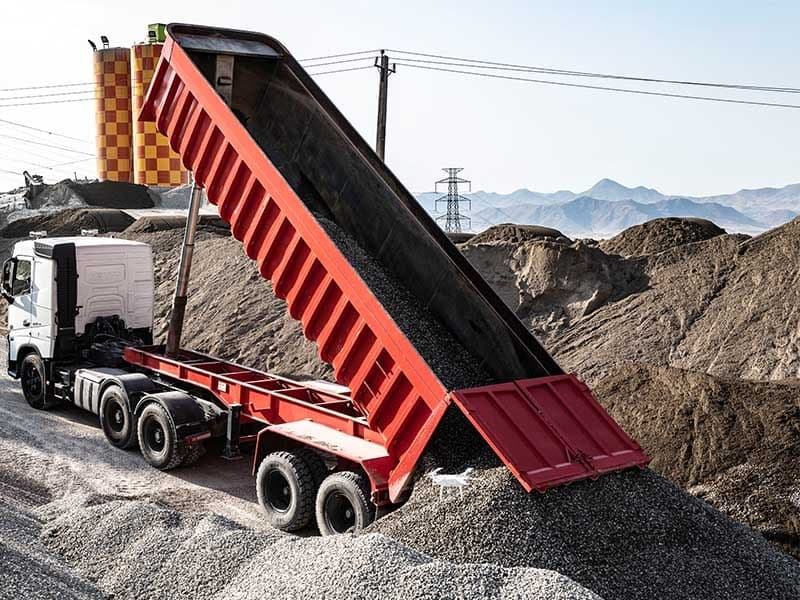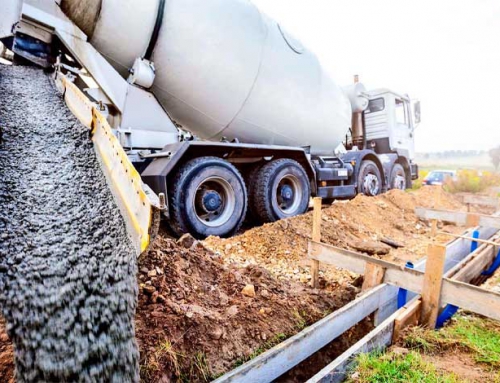Concrete aggregates
Aggregates are often thought to play a filling role in concrete mixes, but a closer look reveals that aggregates play a very important role in concrete properties. Changes in the type, size, shape, unit weight and moisture content can affect the performance of the concrete mix. In this paper we will have a complete overview of the physical and chemical properties of concrete aggregates.
The importance of using aggregates in concrete
Many types of building materials, including concrete, asphalt and mortar, use aggregates as the main materials. Using them as a concrete material reduces production costs and increases the strength of concrete mixtures. Sand aggregates make up about 60 to 75% of the concrete volume.

Concrete aggregates
The properties of aggregates make these materials considered as an essential material in the construction and maintenance of roads, sidewalks, parking lots, airport runways, railway tracks and a set of buildings. In fact, the design phase of most construction projects generally requires a detailed analysis of the source of aggregates, including their type, size, and physical properties.
In addition to construction projects, aggregates can be used in drainage, water filtration and erosion control. They can also be used as fillers in embankment projects. However, the most important use of aggregates is related to concrete, and it is important to consider all aspects of the work.
Types of concrete aggregates
The main types of aggregates are divided into two types:
Sand (fine aggregate)
Sand size is between 4.75 to 0.15 mm. In other words, the size of the grains that pass through the 4.75 mm sieve and remain on the 0.15 mm sieve is called sand. Sand is easily available in abundance all over the world.
Sand (coarse aggregate)
Coarse aggregates are those that remain on the sieve with a mesh size of 4.75 mm. The highest grain size is 7.5 mm. River bed sand is the best coarse aggregate in the manufacture of ordinary concrete.
Classification of aggregates according to production method
In terms of production origin, aggregates can be divided into the following:
Natural
Natural aggregates include all types of fine and coarse aggregates that are obtained from natural sources. Examples include riverbed sand or natural aggregates produced by blasting mountains or in factories.
By-product
These include materials obtained as waste from some industrial and metallurgical engineering. Coal combustion products in locomotives and furnaces and blast furnace slag are of this type.
Processed
These form a special class in aggregates. Processed aggregates are used specifically for the production of quality concretes and lightweight concretes. Processed products often include burnt clay, shale, vermiculite and pearlite
Classification of aggregates based on density
There are three types of gradation based on weight, which are as follows:
- Light weight
- Standard
- High density
Different densities of aggregates are used in different applications. Lightweight and ultra-lightweight aggregates are more porous than heavier ones, so they can be used extensively in green roofs (Roof garden).
These aggregates are also used in concrete block mixes, pavements and applications related to insulation and fire protection. High density aggregates are used to make heavy concrete. This type of aggregate is used for cases that require high-strength concrete structures.
Classification of aggregates based on Shape
Shape is one of the most effective ways to separate materials. The shape of the aggregates will have a significant effect on the performance and compressive strength of concrete. Aggregates purchased in batches from a reputable supplier can be similar in shape if required. But if it’s necessary, a mixture of different shape s of aggregates can be used.
The different Shapes of aggregates are:
- Round corners: Natural grains that are smoothed by air, erosion and river flow are called round corners aggregates. Sands in riverbeds are the most common round-corner aggregates. Round corner aggregates are the main factor in the high workability of concrete.
- Irregular: These aggregates are formed by erosion but are not completely round-cornered and are multifaceted. These aggregates reduce the efficiency of concrete.
- Sharp corners: For high-strength concrete, sharp-grained aggregates are the best choice. Efficiency is low but this problem can be compensated by filling the empty space with round or smaller aggregates.
- Flakes: are defined as aggregates that their length is more than their width. These aggregates have a larger surface area and therefore absorb a lot of water.
Knowing how aggregates work in terms of their shape can have a surprising effect on the performance and compressive strength of concrete. Therefore, it is important to seriously consider the appearance in choosing the type of aggregates.
Percentage of aggregates used in concrete mixing design
Aggregates make up about 60 to 80% of a typical concrete mix, so they must be properly selected to positively affect the strength, performance, polish and durability of the concrete. Concrete components are usually considered in the following ratios in the mixing scheme:
| Ingredient | Percent |
| Cement | Cement 7 to 15 |
| Aggregates | 60 to 80 |
| Water | 14 to 18 |
| Air & Additives | 2 to 8 |
Chemical properties of concrete aggregates
Natural aggregates are made from a variety of minerals such as silica, feldspar, mica, carbonate, sulfate, iron sulfide, zeolites, iron oxide and clay. All mineral aggregates must have all the properties of a good aggregate so that they can be used for concreting or other purposes.
All materials that may impair the durability and strength of the concrete and cause it to become unsuitable should be discarded.
Alkaline reaction of aggregates
Alkaline reaction of aggregates (AAR) is a reaction that begins with the attack of reactive silica minerals or other frozen minerals formed by alkaline hydroxides (K2O and Na2O) in cement. This reaction produces an alkaline silicate gel that has the potential for unlimited swelling in the presence of water.
This swelling destroys the integrity, strength and durability of the concrete. By adopting a low water to cement ratio and using low alkalinity cement, this problem can be prevented.
Impact of aggregates on concrete
Although aggregates are generally considered to be ineffective fillers, these building materials define the thermal, elastic, and dimensional stability properties of concrete. When determining the strength of concrete, aggregates are several times more effective than other concrete components. Concrete made by light aggregates may be affected by the compressive strength of the aggregates!
Other physical properties of the aggregate must be known before mixing the concrete to obtain the desired mixture. These properties include shape, texture, gradation, moisture, specific weight, reactivity and unit weight. These properties, together with the ratio of water to cement, determine the strength, performance and durability of concrete.
The shape and texture of the aggregate affect the properties of concrete more than any other factor. Concrete will be more effective when round-angle aggregates are used instead of sharp corner aggregates. Most natural sands on riverbeds or seashores are smooth and round. Crushed aggregates produce more angular and elongated aggregates that have a higher surface-to-volume ratio, but more cement paste is needed to produce a more efficient concrete mix.
The surface texture of the aggregate can be smooth or rough. A smooth surface can improve performance; however a rough surface creates a stronger bond between the paste and the aggregate and increases the compressive strength of the concrete. Grading or distribution of aggregate size is an important feature because it determines the amount of cement paste. Cement paste is a cost controlling factor because cement is more costly than other components.
The amount of cement paste required depends on the amount of empty space that needs to be filled. When the particles are uniform in size, they make the most holes in the concrete. But when granulation in different sizes is used, the voids are filled and the need for cement paste is reduced. The more these voids are filled, the better the consistency, performance and ultimate compressive strength of the concrete.
The last word
Although aggregates are commonly known as fillers, their various properties will greatly affect the strength, durability, efficiency and economic conditions of concrete. The different properties of aggregates will create more flexibility for designers and contractors to meet the design and construction requirements of the building.










Leave A Comment